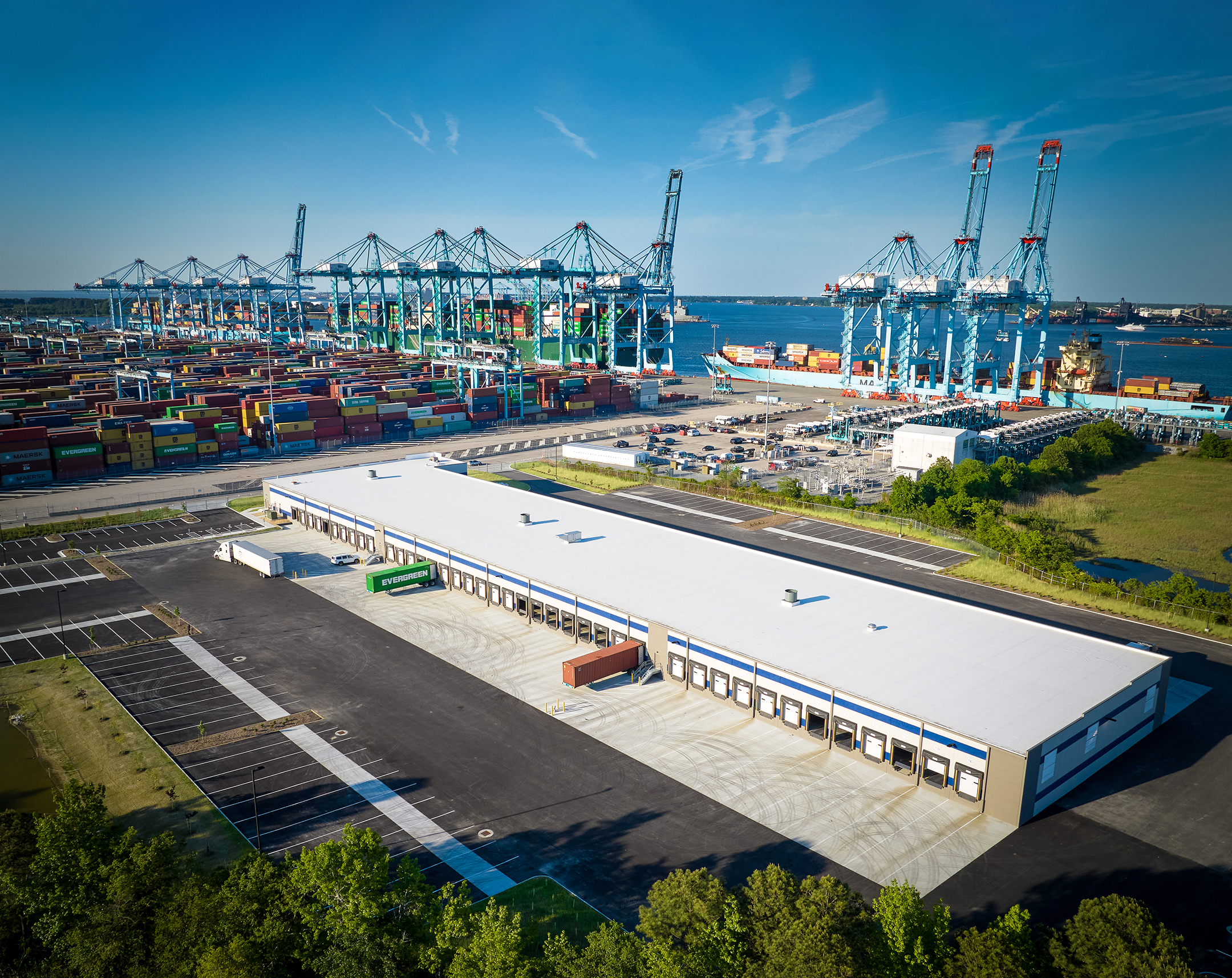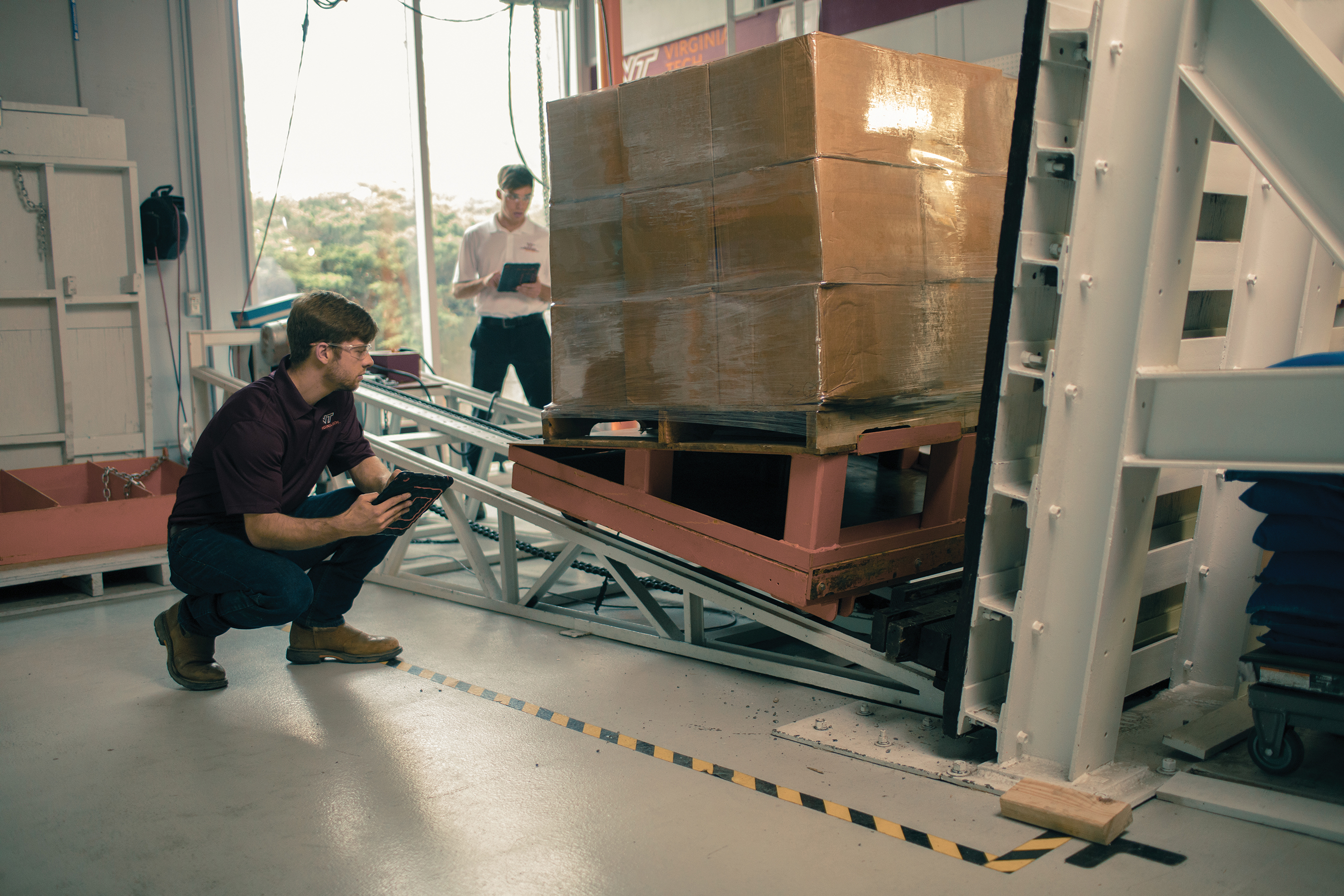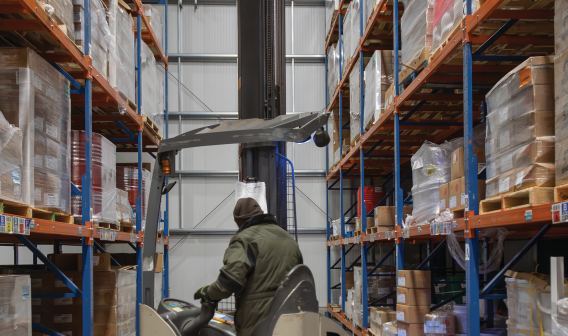Inside Virginia’s Warehousing Ecosystem
Careful planning at The Port of Virginia and other key properties has the Commonwealth poised for development

The Port of Virginia’s investments have made it a key destination for shippers to bring their products to the United States through the East Coast. The port was ranked as the highest-performing in North America in 2021.
In a global economy increasingly reliant on seamless supply chains, warehousing has become a critical pillar of commerce. Dry warehousing, used to store non-perishable goods like furniture, electronics, and clothing, underpins everything from e-commerce to manufacturing. The COVID-19 pandemic accelerated this shift. Disruptions to global shipping, spikes in online shopping, and a renewed focus on supply chain resiliency prompted businesses to rethink their logistics strategies, fueling unprecedented demand for storage and distribution facilities.
The global warehousing market is surging, projected to reach $1.73 trillion by 2030, up from $1 trillion in 2023, according to Grand View Research. This growth reflects not just changing consumer habits, but a fundamental transformation of how commodities are moved and stored.
This evolution is especially apparent in Virginia. With its strategic Mid-Atlantic location, deep water ports, expanding highway and rail networks, and a business-friendly environment, the Commonwealth is fast becoming a warehousing and logistics powerhouse. Now, Virginia is constructing the ultimate logistics apparatus, complete with automated warehouses, efficient on-ramps and off-ramps like ports and interstates, and a growing ecosystem of companies looking to ship smarter and faster.
Port-Powered Development
Much of Virginia’s warehouse surge can be traced back to The Port of Virginia’s aggressive infrastructure investments and unique operating model. The port’s $1.4 billion Gateway Investment Program includes terminal upgrades, the deepening and widening of its channel to accommodate two-way traffic for ultra-large container vessels, and major road improvements such as the Hampton Roads Bridge-Tunnel expansion. These improvements have positioned the port as one of the most modern and efficient on the East Coast.
“That gives developers the opportunity to invest with confidence about the investments that they’re making,” said Russell Young, vice president of Port Centric Logistics at the port.
Unlike traditional landlord-operated ports, The Port of Virginia owns and operates its terminals. That allows for faster, more strategic decision-making and a high degree of customer responsiveness. This model has become a powerful draw for companies outside the Commonwealth, particularly in sectors like e-commerce, food and beverage, auto parts, and consumer goods.
West Coast firms are increasingly diversifying their supply chains to the East Coast to better serve markets east of the Mississippi, Young said. On top of that, companies in the Northeast are consolidating operations by establishing centralized facilities in Virginia to efficiently distribute across the Mid-Atlantic, Northeast, and South.
As companies reassess their logistics strategies in response to shifting trade dynamics and rising operational costs, Virginia’s streamlined, port-owned model offers control and adaptability that set it apart from landlord-operated alternatives. Cross-dock facilities and large warehouses, ranging from 100,000 to 1 million square feet, are in high demand. Beyond port infrastructure, businesses value Virginia’s direct rail connectivity to Midwest manufacturing hubs.

Several of Virginia’s top-notch colleges and universities offer logistics and warehousing programs, including the Center for Packaging and Unit Load Design at Virginia Tech.
Reimagining Warehouses
Virginia’s strategic positioning as a shipping hub isn’t the only factor driving the warehouse sector’s growth. Legacy Investing, an Arlington County-based real estate firm, is pioneering a new model of industrial real estate development, bundling automation capital directly into leases. Inspired by the data center industry, this model allows tenants to lease both space and automation equipment under a single payment structure, a model they describe as “warehouse as a service.”
This approach addresses a critical challenge for many companies: the high upfront cost of automation. By writing off the initial costs of structural automation, like robotic picking systems, over a long lease, tenants can adopt advanced logistics technology without the typical financial burden. For high-volume industries such as direct-to-consumer retail, food and beverage, and life sciences, this can significantly improve margins and scalability.
“I can give the tenant the first year rent-free until they’ve ramped up and started shipping,” said Joe Dunlap, Legacy Investing’s chief supply chain officer and founder of supply chain and real estate consultancy firm BlueJ Advisors. “Now, I can give them a payback period that’s less than a year, if not immediate.”
Virginia is a natural fit for this model. The Commonwealth boasts pad-ready sites, a deep skilled labor pool, and streamlined permitting processes, all of which shorten the development timeline for industrial projects.
The implications extend beyond business operations. Automated warehouses require fewer employees overall. But those roles — such as mechanics, technicians, and programmers — are higher skilled and significantly better paid than typical warehouse labor. This makes automation particularly attractive for rural communities, where labor pools may be smaller but can support higher-paying positions with proper training and infrastructure.
“Most of those jobs are going to look and feel more like manufacturing jobs. They’re going to be much better and more competitive,” Dunlap said.
Most of those jobs are going to look and feel more like manufacturing jobs. They’re going to be much better and more competitive.
Taking the Long View
Amid the fast-paced rush to develop warehouse space, some firms are opting for a more measured, long-term approach. One example is Sauer Properties, Inc., a family-owned company based in Richmond, which is developing the Sauer Industrial Center, a 300-acre site in Henrico County adjacent to Richmond International Airport that could support up to 2.5 million square feet of industrial space.
Unlike many developers driven by short-term returns, Sauer intends to hold its developments for 10 to 20 years or more. This long-term bet allows them to be selective with the clients they choose to work with. Sauer also has the runway to build features that could help enterprise tenants attract and retain skilled employees, including a thoughtfully designed industrial park with lush outdoor spaces and walking trails.
“I think we have an advantage in that we can be patient,” said Marshall French, the company’s director of real estate development and construction. “We don’t have to deploy capital right now just to put up buildings — we can take our time with development and find the right users.”
Richmond’s central location, affordability, and infrastructure make it an ideal inland hub for logistics and manufacturing. In addition to the port’s Hampton Roads facilities down the road in Norfolk, Richmond is home to the Richmond Marine Terminal and its barge service, along with connectivity from the nearby intersections of interstates 64, 85, and 95.
“Henrico is a great location to develop,” French said. “It’s very pro-business with robust infrastructure and a highly educated workforce that we think is going to be attracting a lot of those high-quality tenants who fit well strategically with our vision for this development.”
Sauer’s strategy is also resilient in the face of market fluctuations. While U.S. warehouse vacancy rates have recently ticked up, compounded by tariffs and supply chain reshoring, Sauer isn’t too worried about its industrial base.
“To us, the current vacancy feels more like a normalization, though we’ll definitely keep an eye on it,” French said.
Smart Growth, Smarter Warehouses
Despite economic headwinds and geopolitical uncertainties, Virginia is continuing to reinvent its supply chain operations with little disruption.
The Commonwealth is wrapping up the Gateway Investment Project and is on track to complete the Hampton Roads Bridge-Tunnel expansion by early 2027. Meanwhile, Legacy Investing is scaling its warehouse-as-a-service model, a move Dunlap said is the “foundation of long-term competitiveness for companies.” And Sauer is slated to kick off Sauer Industrial Center’s initial phase of development within the next six to eight months. The project will be developed over the next five to 10 years.
Together, these efforts are positioning Virginia not just as a player in the logistics space, but as a national leader shaping the future of warehousing.




